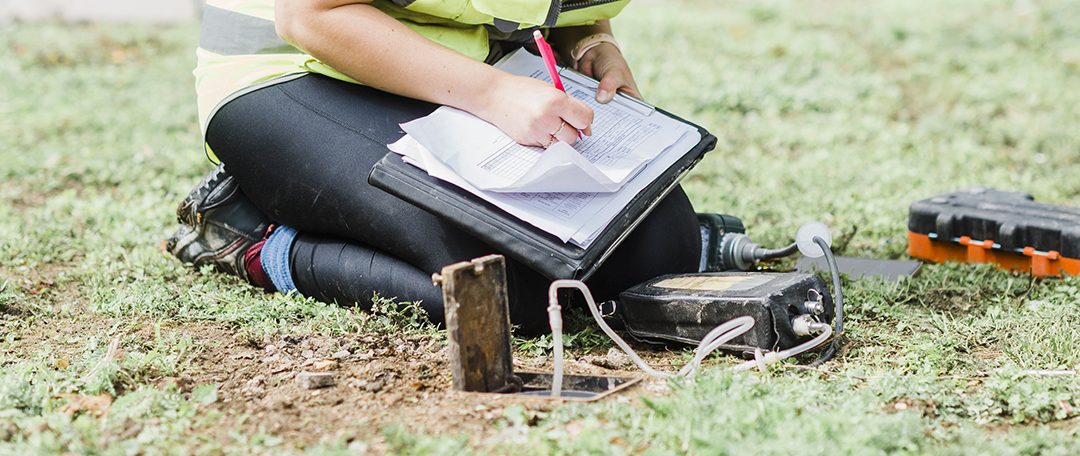CL:AIRE RB17… An alternative to traditional gas monitoring
Geoenvironmental • Industry matters
If you’re tackling a site with Made Ground and wondering whether ground gas is a lurking hazard, this guide walks you through how Total Organic Carbon (TOC) Analysis can help you assess the risk – without overcomplicating things. Read on to understand Gas Risk in Made Ground and a practical guide to TOC Analysis.
What Is Made Ground and Why Does It Matter?
Made Ground is the engineered or anthropogenic fill, found on many brownfield sites. Think rubble, ash, timber, plastics and other legacy materials. It’s unpredictable, and that’s precisely why it can be a headache when assessing ground gas risk.
The breakdown of organic matter in Made Ground can produce methane (CH₄) and carbon dioxide (CO₂) – gases that pose explosion and asphyxiation risks respectively. But not all Made Ground is equal. Some is inert, some is active. So how do you tell the difference?
Enter TOC Analysis… Your First Line of Defence
TOC (Total Organic Carbon) analysis is a forensic tool used to estimate the gas-generating potential of Made Ground. It’s especially useful when:
- Gas monitoring data is limited or inconclusive
- Site constraints prevent long-term monitoring
- You need to justify a low-risk classification
TOC Analysis measures the amount of organic carbon in soil samples. The higher the TOC, the greater the potential for microbial activity and gas generation. But it’s not just about the number, it’s about context.
What CL:AIRE RB17 Says
CL:AIRE’s Research Bulletin 17 (RB17) offers a pragmatic alternative to traditional gas monitoring, especially for sites with low risk Made Ground. It promotes a forensic description of materials and TOC testing to assess the presence of degradable organic matter.
Key takeaways from RB17 are:
- Large, representative samples are preferred – trial pits often yield better material than boreholes
- Forensic logging is essential: record colour, odour, texture and visible waste. This isn’t necessarily like a forensic test in a lab… It’s identifying visually if there are any degradable materials and what percentage of the Made Ground is brick, concrete, carbonaceous material etc.
- TOC thresholds help guide risk classification. Low TOC (<1.0%) in inert material may justify avoiding gas wells altogether
- A robust Desk Study and Conceptual Site Model (CSM) are critical to support this approach, especially in analyzing the age of the fill.
Depth Matters
Made Ground can range from less than 1 metre to over 5 metres deep, depending on the site’s history – urban redevelopment, industrial legacy, or landfill use all play a role.
- Shallow Made Ground (<1.5m) – often associated with minor infill or landscaping – may pose minimal risk unless organic-rich materials are present
- Moderate Depth (1.5–3m) – common in urban brownfield sites – requires careful logging and sampling, especially if mixed materials are observed.
- Deep Made Ground (>3m) – often linked to historic landfilling or industrial backfill – has higher potential for gas generation due to volume and possible anaerobic conditions.
Please note that for Made Ground to be a potential risk the AVERAGE depth should be moderate to deep.
Sampling should extend at least 0.5m into the natural ground beneath the Made Ground to confirm the base and rule out deeper sources of gas.

Is It Actually Degradable?
Not all Made Ground is created equal. The key question is: does it contain degradable organic matter?
- Degradable materials include wood, paper, textiles, food waste, and certain plastics. These can break down anaerobically and produce methane and CO₂
- Inert materials like brick, concrete, glass, and metal pose little to no gas risk
- Visual logging during site investigation is essential. Look for signs of organic content – dark staining, odour, fibrous textures, or visible waste.
TOC analysis helps quantify this risk. A low TOC result (<1.0%) in a sample dominated by inert materials may justify a low-risk classification. But if TOC is elevated or the material is visibly degradable, further monitoring or mitigation may be needed.
Keep It Proportionate
At Ground & Water, we believe in pragmatic, evidence-led assessment. TOC analysis – especially when guided by CL:AIRE RB17 – helps you avoid over-engineering gas protection measures while keeping safety front and centre. It’s about doing enough, but not too much.
If you’re unsure whether TOC Analysis is right for your site, we advise starting with a robust desk study and PRA. Then let the data guide your next steps.
